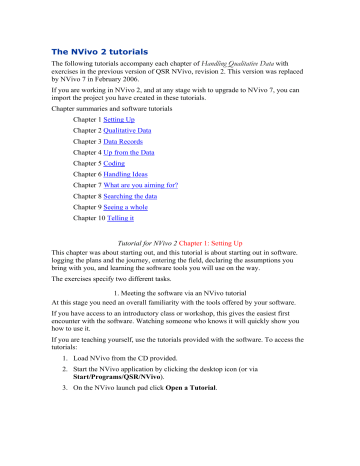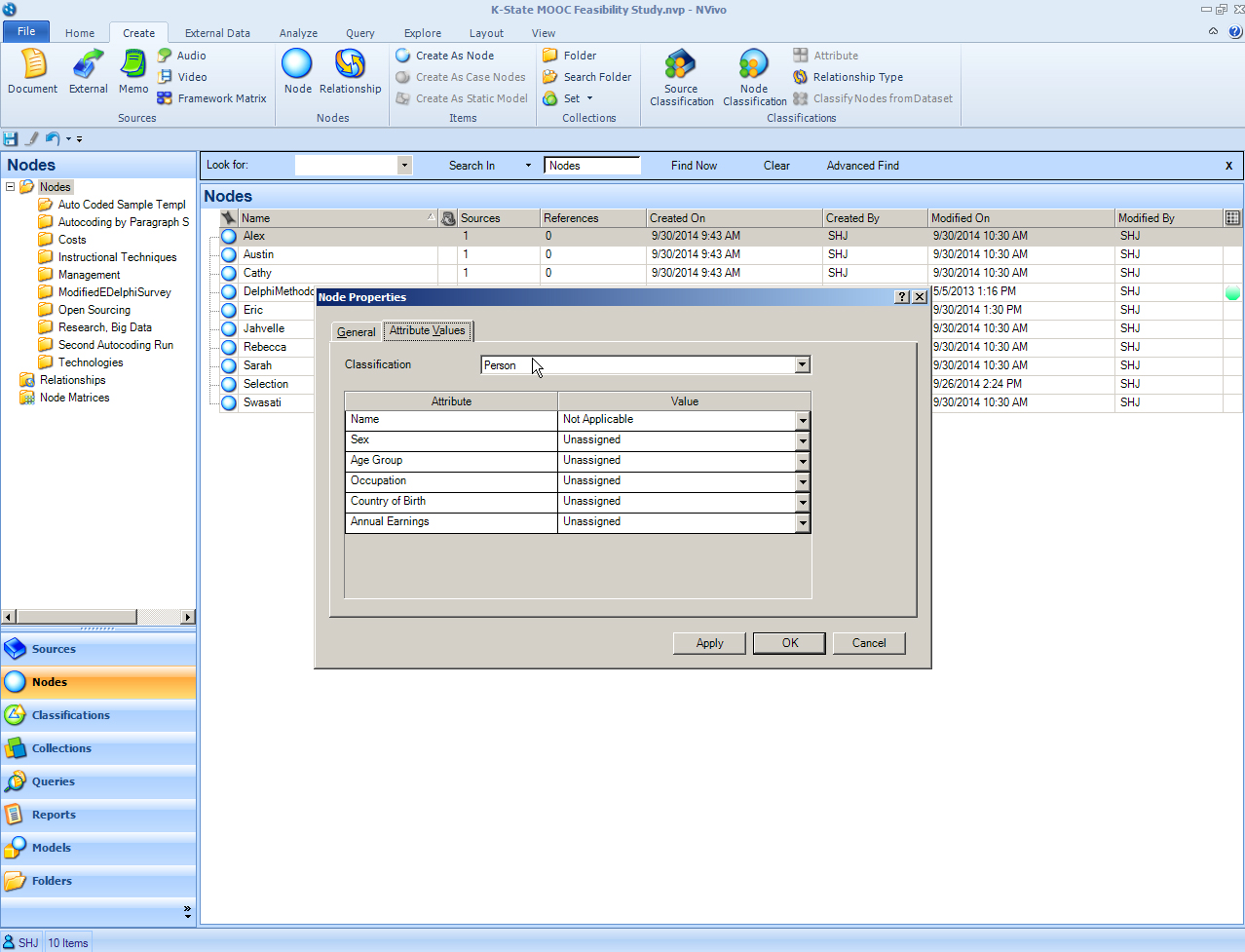


The ribbon is designed so you can easily and quickly find the features you need.The navigation panel groups key tasks under ‘import’, ‘analyze’ and ‘explore’ to help guide you through your research process.Get started straight after the tour, and follow cues that support you to ‘import’, ‘organize’ and ‘explore’ your data with ease. When you open NVivo, a quick tour gets you up to speed right away. Information from the user's profile is stored as attribute values for each code.News It's NVivo.
#Nvivo 12 assign attributes code#
When you auto code a dataset containing social media data (imported from NCapture files) and choose to code by Username, NVivo creates cases with the classification 'Facebook User', 'Twitter User, or 'YouTube User'. Merge projects or import items from another project Create case classifications from datasets containing social media data You can also create classifications by importing the classification and attribute structures from another NVivo project (without importing the attribute values associated with cases). Approaches to analyzing survey results Import case classifications from another NVivo project When you import responses from SurveyMonkey or Qualtrics, or import data from spreadsheets or text files-the Survey Import Wizard automatically creates and classifies cases for each respondent in a survey, and assigns attribute values based on the classifying fields in the dataset. Classify cases from values in a survey or dataset You can now assign cases to the new classification and define the attribute values for each case. You can also add the values later in List View or in the classification sheet.

You can create whatever classifications you need to support your analysis.įor example, your study may involve interviewing Students and Teachers (two groups with different sets of attributes). Case classifications let you store demographic information about the 'units of analysis' in your project.įor example, you could create cases for your interview participants, assign these cases to a classification called Person, and record values for Age, Gender, Level of Education and Occupation.Īfter you have done some coding, you can make comparisons based on these demographic attributes-for example, are there differences between how men and women respond to a particular issue? Crosstab queryīefore you can setup the demographic data for your cases, you need to add one or more classifications to your project.


 0 kommentar(er)
0 kommentar(er)
